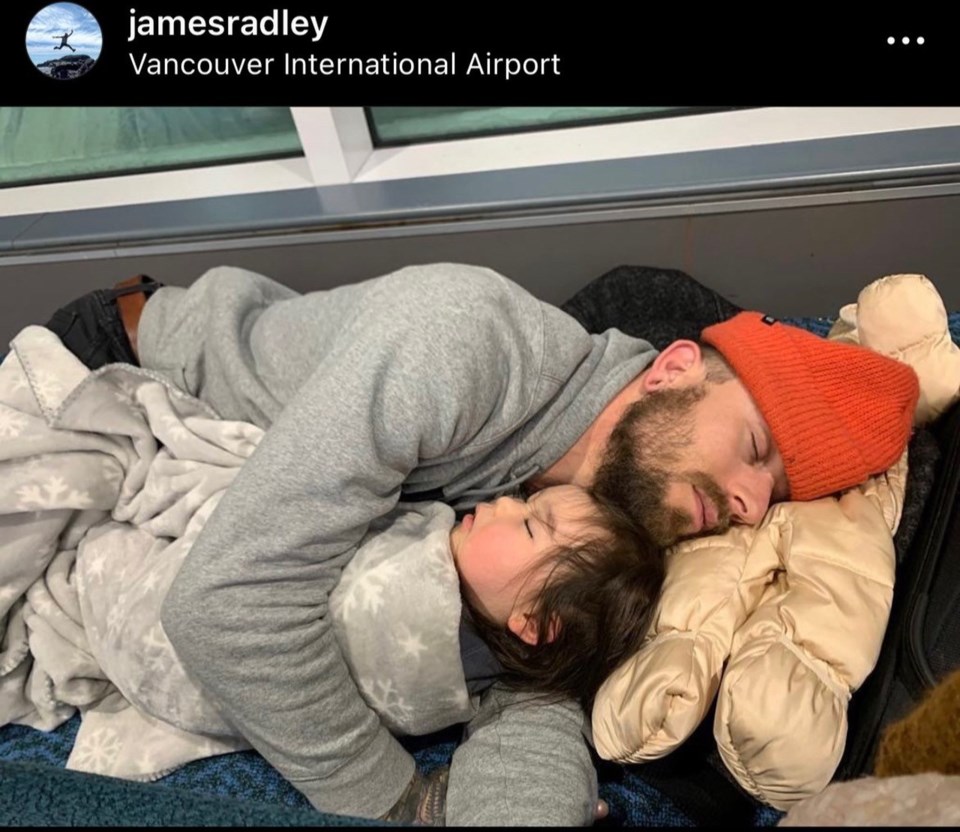Winter storms cancel flights and disrupt airport operations. Everyone knows that. Yet, when Metro Vancouver’s forecast delivered on its promise, the one entity required to trigger an adequate crisis response froze.
The awarded Vancouver International Airport (YVR) tweeted that it experienced what it called “unprecedented cancelations.” Media and social media shared images of hundreds of travellers amidst chaos, including a father sleeping on the floor with his two-year-old child – and a five-month-old in tow.
But mass cancellations weren’t the only problem. Passengers were confined on aircraft for as long as 12 hours, some who arrived after lengthy international flights.
With each hour, the snow, panic, and crisis deepened. So did confusion. We’ve had “snow events” before – seemingly worse by the year – so why was YVR unprepared? Certainly, executives learned and implemented lessons from cities that frequently experience such weather.
One would think our world-class airport has a comprehensive – even tested – crisis playbook that would cover obvious vulnerabilities like: “What if planes get stranded on the tarmac?” or “What if countless travellers get stranded at the airport?” The public expects some semblance of readiness for operations, tech, and communications that would be activated when a week like December 19 happens.
Hardly.
YVR appeared to fly by the seat of its pants. Its Twitter feed was heavy on apologizing for “inconveniences” and grateful for everyone’s “patience,” and left the impression a strong coordinated response and escalation procedures were underway.
But images betray. And YVR lost the narrative.
During a crisis, a CEO is the chief crisis manager, a busy job for certain. But the CEO is also the chief communicator, the public face in good times, but especially in bad. Citizens rely on leaders for information.
One press conference by YVR’s CEO Tamara Vrooman early in the crisis could have been enough to express empathy, reassure the public about the plan, and instill confidence, but that didn’t happen. Instead, headlines read: “YVR CEO silent during chaos.” (Even Ukraine’s president communicates with some regularity during a war).
YVR left communication to spokespeople, but mostly to poorly written, bloated tweets.
Though Vrooman would later claim that she was on the ground helping customers, nobody from her staff communicated that to the public – a lost opportunity to demonstrate leadership. What’s more, the media was denied access to her. Certainly, with a compensation package upwards of $1.3 million, the CEO is mandated to share information in times of crisis.
Her invisible leadership provided fodder for Where’s Waldo? coverage on Global TV as reporter Kamil Karamali searched the airport for Vrooman – photo in hand – while highlighting that she was all smiles during a feel-good media opportunity one week earlier.
By contrast, WestJet’s CEO Alexis von Hoensbroech demonstrated visible leadership, exceeding expectations with a boots-on-the-ground approach at Calgary Airport where he assisted travellers and used his personal Twitter feed to communicate. His actions supported his customers and his team. People will remember how he led.
Meanwhile, back at YVR, as travellers cried sleepless and hungry – holiday plans dashed – they could have used a human face, a leader to comfort them that someone is taking charge; to demonstrate that someone cares enough to show up; to share what they know to help manage fear and expectations.
Eventually, Vrooman would address the public … but only when the worst was over.
Here's a timeline. The snowstorm started on Monday, December 19. Tuesday and Wednesday, chaos ensued. Vancouver made more than international headlines – a Japanese astronaut shared an image of snow-covered Vancouver from the International Space Station.
It would be Thursday before Vrooman would “break her silence” as the media put it. And it would be Friday – when operations were underway again – before YVR implemented passenger outreach it dubbed “care and comfort,” providing free hotel rooms and meal vouchers.
Though Vrooman said she is “pleased” with the airport’s overall response, YVR appears vulnerable. Let’s hope she commits resources to reflect and correct, and then takes the time to communicate future readiness.
As I counsel clients – and something that applies literally to YVR: “Tell the news, weather the storm.”
Maybe next time.
Renu Bakshi is a former long-time journalist who now works as an international crisis manager and media trainer. She is based in Vancouver and can be reached at [email protected]




